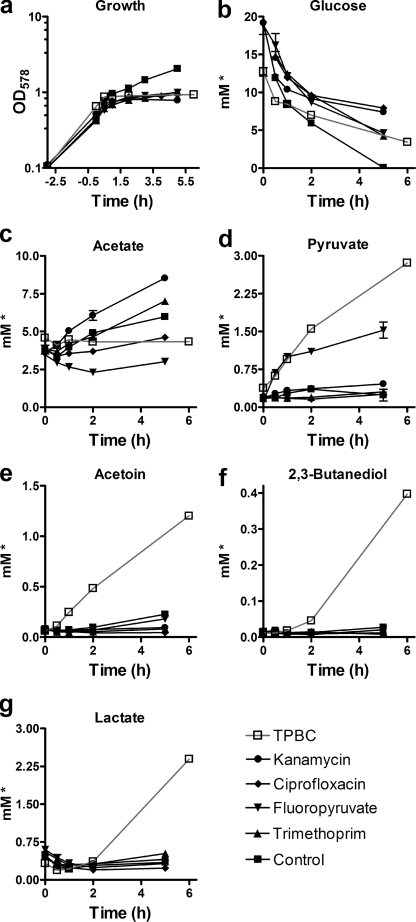FIGURE 6.
Accumulation of pyruvate is a specific response of S. aureus to treatment with TPBC and the PDHC inhibitor fluoropyruvate. Treatment of S. aureus with TPBC (0.35 μg/ml; red line), kanamycin (12.5 μg/ml), ciprofloxacin (150 μg/ml), trimethoprim (25 μg/ml), or fluoropyruvate (FPA; 200 μg/ml) results in inhibition of growth (a), glucose consumption (b), and, with most of these antibiotics, altered acetate release (c), as determinded by 1H NMR-based exometabolome analysis. However, only TPBC and fluoropyruvate led to accumulation of pyruvate (d), and only TPBC induced accumulation of acetoine (e), 2,3-butanediole (f), and lactate (g). *, concentrations relative to measured A578 values at a given time point. They represent means and S.E. (error bars) of three biological replicates.

